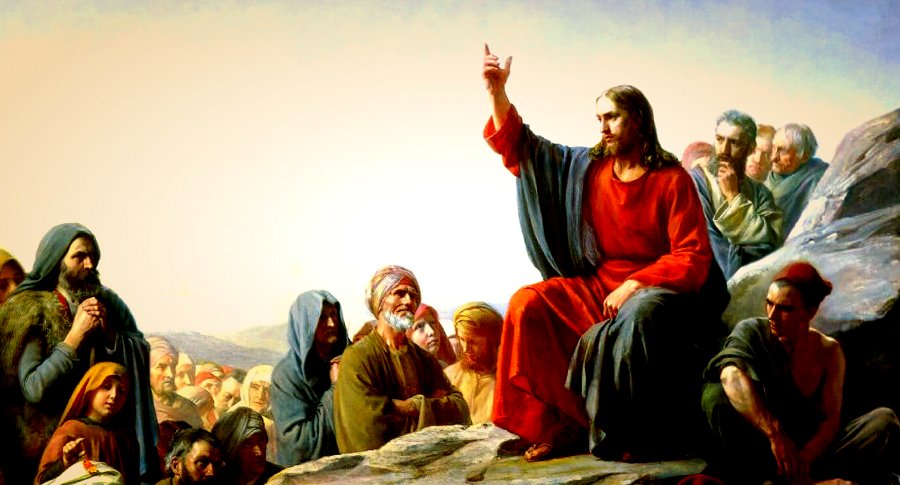Parable of the Fig Tree

Parable of the Fig Tree: Matthew 24:32-35; Mark 13:28-29; Luke 21:29-31
The parable of the fig tree is one of the most important parables to read in context.
When people fail to read this parable with consideration to who's saying it and why, they come up with incorrect interpretations that are just not possible when you read it within the surrounding text. In context, the interpretation is clear.
Context Previous to the Parable
The actual context of this parable begins in Matthew 24:1 (Mark 13:1; Luke 21:5).
Jesus mentions the destruction of the temple, which prompts his disciples to later ask, "Tell us, when will this be, and what will be the sign of your coming and of the end of the age?" (Matthew 24:3) Jesus then gives a long answer which continues until the end of the chapter.
Within this answer is the parable of the fig tree, which is told as part of the response to his disciples' question.
To begin, Jesus tells them about the signs of the end of the age. He says there will be wars, rumors of wars, famines, and earthquakes, all of which are just the "birth pangs" of the end. Jesus also speaks of persecutions that will happen before the end comes. Then, he talks about a great fleeing and suffering that will occur.
It is important to mention that Jesus isn't teaching an order of events. Rather, he is speaking about individual topics, teaching what will happen before his return.
Next, Jesus says, "Immediately after the suffering of those days the sun will be darkened, and the moon will not give its light..." (Matthew 24:29) and the Son of Man will be "coming on the clouds of heaven with power and great glory" (Matthew 24:30).
Jesus then presents the parable of the fig tree, saying to learn from its lesson.
Meaning of the Parable of the Fig Tree
Jesus says, "From the fig tree learn its lesson: as soon as its branch becomes tender and puts forth its leaves, you know that summer is near." (Matthew 24:32)
Jesus is simply remaking the same point he just made: As soon as you see these things, it should be obvious to you that the end of the age is near, just like it is obvious when summer is near.
Therefore, when we see these "birth pangs" (wars,
famines, earthquakes, etc.) we can know the end is near. Likewise, there will be false prophets and false messiahs.
However, because "with the Lord one day is like a thousand years, and a thousand years are like one day," (2 Peter 3:8) these events do not indicate how close the end is, only that it is near. These signs may indicate that the end is coming, but it may still be thousands of years away.
However, when the sun and moon are darkened, and the stars are falling (probably meteors) and there are great waves from the sea, and people are fainting for fear of what is going to happen on the earth (Luke 21:25-26), these things appear to occur basically right before Jesus comes back.
Context After the Parable of the Fig Tree
After Jesus tells this parable of the fig tree, in order to show that these signs signify the end of the age is approaching, he says, "Truly I tell you, this generation will not pass away until all these things have taken place." (Matthew 24:34; also Mark 13:30 and Luke 21:32)
Within the entire context, this generation means the generation that is experiencing these right-before-Jesus-comes-back signs, such as the sun and moon being darkened, the stars falling, and people fainting from fear.
This generation cannot mean the generation he spoke to, because Jesus has not returned yet and his return is described as, "For as lightning comes from the east and flashes as far as the west, so will be the coming of the Son of Man." (Matthew 24:27)
Contextual Evidence that Jesus is God
Jesus also says, "Heaven and earth will pass away, but my words will not pass away." (Matthew 24:35)
This is one of the many comments Jesus makes that allude to the fact that Jesus is actually God in the flesh.
How is this possible?
If the immortal God were to dwell in a mortal body, there is no reason why he would not continue to be in heaven as well, especially if he is omnipresent.
This means that there would need to be a distinction between the part of God in heaven and the part of God in a human body, which is why the evidence in the Bible supports the idea of a Trinity, with One God, but three distinctions:
- Father who dwells in Heaven.
- Son who dwells in a human body.
- God's Spirit that dwells in believers, as a seal of eternal life. As Paul says, "by putting his seal on us and giving us his Spirit in our hearts as a first installment." (2 Corinthians 1:22)
An example of evidence for the Trinity can be found during the Baptism of Jesus.
"Now when all the people were baptized, and when Jesus also had been baptized and was praying, the heaven was opened, and the Holy Spirit descended upon him in bodily form like a dove. And a voice came from heaven (The Father), 'You are my Son, the Beloved, with you I am well pleased." (Luke 3:21-22)
For additional scriptural evidence on the divinity of Jesus, read Jesus Christ is God.
For a good argument against the many false interpretations of this parable of the fig tree, visit Is the Parable of the Fig Tree about the generation that saw the rebirth of Israel?
God's Truth Taught in Stories
Study the parables of Jesus in this easy-to-read 40 day devotional.
This devotional takes the unique approach of
understanding Jesus' parables by examining the genre, scriptural
context, and historical culture. Your life will be transformed by studying the parables of Jesus Christ.
Go to previous parable: Wicked Tenants
Go to next parable: Wise and Foolish Builders (Two Builders)
← Back to The Parables of Jesus Christ from Parable of the Fig Tree
Go to Messiah of God Home
YOU MAY ALSO LIKE
-
God’s Delay Is Not God’s Denial (Ecclesiastes 3:11, Habakkuk 2:3)
Have you ever prayed for something, waited, and felt like God was silent? Have you ever believed for a breakthrough, yet faced delay after delay? Many of us... -
Biology of Cell confirms Intelligent Design: Irreducible Complexity
The complex biology of the ‘basic cell’ exhibits what has been termed ‘irreducible complexity’ by biochemist Michael Behe, due to the fact that removing even... -
What is love? It's a call to action.
What is love? It's a call to action. Guest post by Ben Byrum. -
Miraculous Physical Healing Explains Salvation: The Truth of Jesus’ Salvation
If you have stage 4 pancreatic cancer, then with current medical technology you have likely not been given any hope for getting better. Your cancer is terminal. In fact, with many diseases... -
Does Science Argue For or Against God?
Probability of the Universe Existing in Coin Flips: Flipping a coin has a 50/50 chance of heads vs tails. How many times do you think you could flip heads in a row with a 50/50 chance? -
Man Finds Single Ominous Bible Page in Wildfire Aftermath
Wildfires in Tennessee have temporarily displaced thousands of people fleeing from the destruction. Over 100 homes have been destroyed, as well as hotels and businesses. Thus far, seven people... -
How to Obey God's Will
Obeying God's will is actually more simple than it seems. The truth is that some actions are good (holy), some actions are bad (sinful), and the majority of actions are completely neutral... -
Doubting After God Answers Your Prayers
Having God answer your prayers can result in overwhelming feelings of joy, relief, and thankfulness. However, sometimes doubt of God's intervention can appear and begin to steal your confidence... -
How to Prove God Exists
For unbelievers, there are only a few ways to prove that God exists, depending on how willing they are to accept God's existence. For unbelievers who are... -
The Lie of Sanctification
Sanctification is a widely accepted belief that bridges the gap between the biblical mandate for obedience to God and the practical application of living a Christian life as...





